How does one reconcile the carnage with the holy? Within the quietude of Quaker faith and practice rests a radical thought: that every day is holy. This is one reason why we don’t celebrate major Christian holidays such as Christmas or Easter. The theology is pretty straight forward and stems from the foundational belief that the spirit of God is found in everyone, without exception. Every day is infused with the presence of the Divine and therefore there is no sense of waiting for the coming of God or seeking the Spirit which may be absent. The spirit of the Divine is present within us. It has always been and it will always be. There is nothing we can do to earn this grace and there is nothing we can do to lose it. God is with us all, now and forever.
I try – and mostly fail – to live my life embracing the Spirit within me and within everyone I know and everything I see. I sometimes imagine myself swimming in the water of the Divine each and every day. Like a fish in a lake surrounded by water, we are all surrounded by God. The Divine is in the air we breathe, in the food we eat, in the ground we walk upon, in the people we meet, in the clouds above and in the cosmos beyond. Seeing the holy in everyday life isn’t about grand gestures. Rather, it is about noticing the wonder of the mundane; rejoicing in the dance of the dust in the sunlight streaming through your bedroom window. It is about noticing the grandeur of a butterfly or the delight of a child at play, or the miracle of a seed transforming into a flower. When we do the laundry or prepare a meal or meet with a friend in need, we are performing an act of worship – channeling Divine Light into the world. And so, if we spend our days immersed in the glory of God, then every day is a holy day. Or is it? I am haunted by the recent images I’ve seen in the Washington Post about the bloody aftermath of the shooting of 19 innocent children and two teachers at the Uvalde Elementary School in Texas on May 24, 2022. The newspaper has taken up the charge of bringing front and center the horror of what actually happens at a mass shooting. For example in classroom 112 at the Uvalde school we learn that the children were huddled together in a corner before they were massacred. One of the pictures in the Post shows the classroom at a distance where you can just make out the blood stained floor at the far upper left of the frame. But then, the next picture takes you up close. The blood is deep and crimson and smeared, and there is a tiny blood stained tennis shoe in the middle of the gore. It is heartbreaking. And then I am reminded of another picture, equally heart wrenching, of a Palestinian mother sitting on the ground, her head down as she is clutching the shroud wrapped body of her child. The child’s limp arm protrudes from the white cloth. And we know that this scene is repeated thousands of times. How does one reconcile the carnage with the holy? Certainly there is goodness and light throughout the world if we only look for it. But, that may be of little solace to the mother mourning her child whom she will never kiss again. Perhaps with some time and distance, these families will return to seeking the light of the Divine. But in the immediacy of it all, I imagine there is only darkness. Maybe the answer to the question of how does one reconcile the carnage with the holy is that we can’t. Maybe all we can do is hold the paradox of light and darkness in our hearts. Holiness does not mean an absence of death, or disease, or greed, or cruelty. Holiness simply means that in the midst of it all there is still the presence of God. It is we who are holy and it is we who must shine the light of the Divine onto the profane. In the words of the eastern mystic Rumi: “If everything around seems dark, look again, you may be the light.”
0 Comments
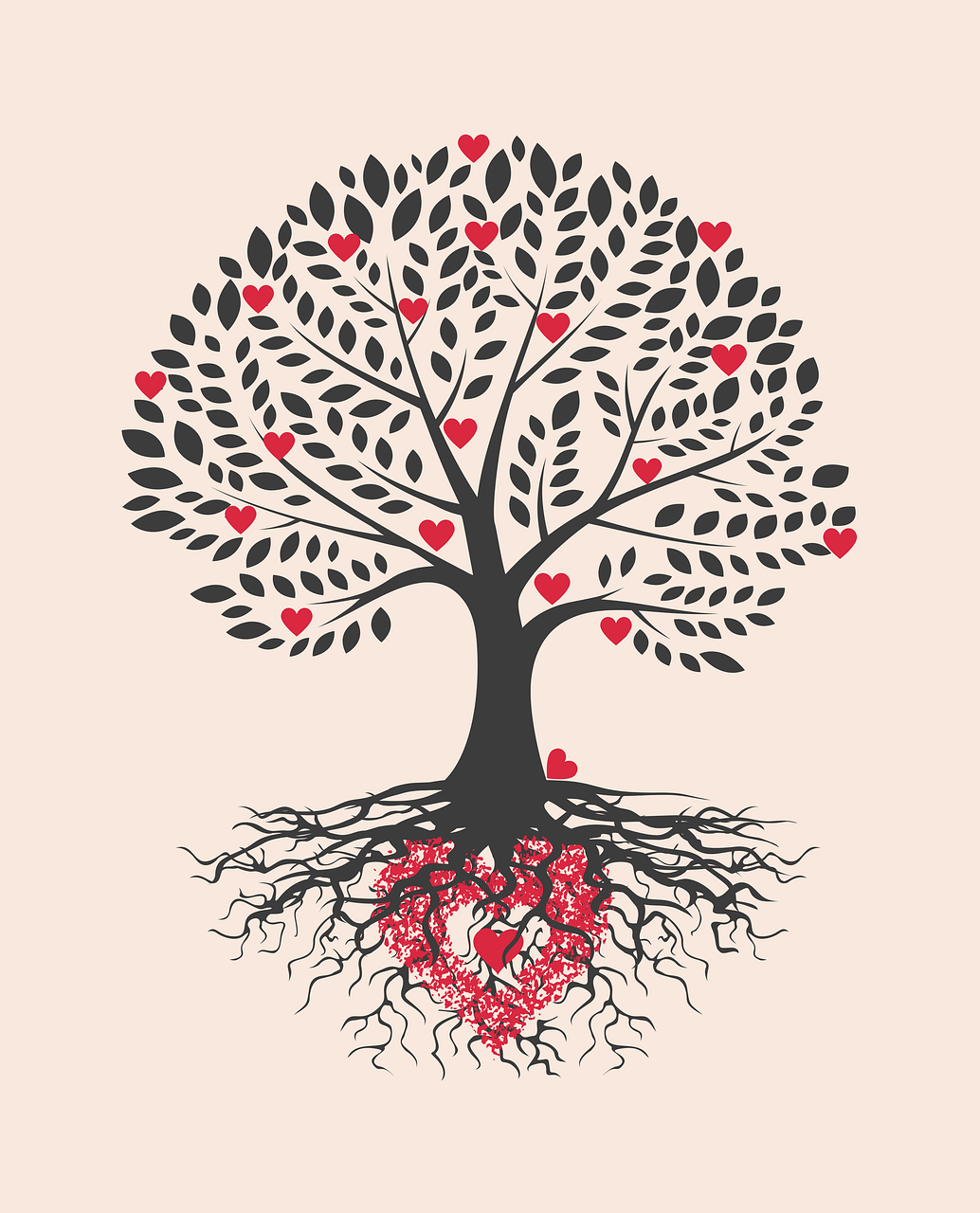 Image by Rosy from Bad Homburg / Germany from Pixabay Maybe the issue isn't to stop sowing bad seed...(but instead) to sow more good seeds The idea of reaping what we sow is often considered at the individual level and usually in the same vein as Karma: the actions we take come back to us in good ways and bad. I find it interesting to look at this concept of reap what we sow at a societal level. Does a society like the United States – collectively – reap what it sows? Perhaps. Here are a few examples.
In America, we sow guns – by the hundreds of thousands throughout the land. Best estimates are that Americans own somewhere between 350 Million – 480 Million guns; in a country of 340 Million people. And what do we reap from all these weapons? We “lead” our peer countries in the number of mass shootings, gun-related homicides; gun-related suicides and most recently, firearms becoming the leading cause of death among children. We also sow carbon dioxide. The US represents nearly 4.25% of the world’s population, but yet we emit 13.5% of the carbon dioxide into the atmosphere; eclipsed only by China according to the organization, Our World in Data. The “harvest” from this overabundance of carbon dioxide is a growing number of climate disasters such as excessive heat waves, drought, floods, wildfires, and hurricanes. NOAA charts US climate disasters based on the total cost of the damage wrought by each incident. According to NOAA, 2022 marked the eighth consecutive year with 10 or more billion-dollar disaster events impacting the United States. In the past, the US experienced about 8 such events per year, but within the span of 2018 – 2022, we averaged nearly 18 events per year – more than double the historical number. We also sow plastic; tons and tons of plastic. The production of plastics, which are made from fossil fuels, has increased at exponential levels. Half of all plastic – ever produced – was made within the past 15 years. Consider this, in 1950 we produced a mere two million tons of plastic. By 2015, we were producing nearly 450 million tons of plastic per year, and if unabated that number will double by 2050. And the biggest producer of plastic waste in the world? The United States. What do we get from sowing all this plastic? Some studies estimate that there are between 15 – 51 trillion pieces of plastic floating in the world’s oceans. In fact, the plastic garbage patch floating in the Pacific Ocean is large enough to encompass the combined midwestern states of Wisconsin, Minnesota, South Dakota, Illinois, Indiana and half of Ohio. This sea-borne plastic begins to break down chemically from the interaction of sun, waves and seas into tiny “microplastic” particles, which have been found in every part of the world from the peaks of Mount Everest to the Mariana Trench – the deepest trough in the ocean. Microplastic particles breakdown into exceedingly smaller particles and seep into drinking water systems and into peoples’ lungs through the air. Clearly, we the people of the United States are sowing some pretty nasty seeds and reaping untold carnage on ourselves and others. But, what are we to do? Well, the simplistic answer is to stop sowing bad seed. Of course, that’s not so easy. Countless numbers of individuals and organizations have been working for decades to stop the spread of guns and plastic waste, and to limit the production of carbon dioxide – with little significant success. To me, all of these bad seeds stem from the same problem: people are trying – unsuccessfully – to fill a gaping hole in their heart. We look around and see a breakdown in community so we become fearful of others; fearful that life as we know it will be taken away; fearful that there won’t be enough resources to go around and thus greed and hording begins to take hold. Many of these issues seem so large and intractable that a sense of powerlessness sets in and we begin to resign ourselves to a future of dwindling possibilities. Maybe the issue isn’t to stop sowing bad seed, as much as it is to redouble our efforts to sow more good seeds. We Quakers like to say that there is “that of God” in every person. Put another way, we can say that the seed of the Divine is present within everyone, and what is needed is to shine the light of God deep enough, wide enough, and strong enough to bring that seed forth from each individual. As advised by Maxine Hong Kingston, “In a time of destruction, create something. A poem. A parade. A community. A School. A vow. A moral principle. One peaceful moment” The light of God is within you. Let that light shine so others may blossom and illuminate the world. There is a lot we can learn from children, if we just open our eyes and our hearts I have the joy of helping to care for our toddler granddaughter every Thursday, and on a recent visit, I was struck by how her words and actions could be translated into solid management techniques. I know what you might be thinking. Many of us have had the unfortunate experience of working for a supervisor who acted like a toddler; who thought only of him/herself or who threw temper tantrums when things didn’t go their way. But that’s not what I’m talking about here. There are positive lessons we all can learn from observing little ones at play. Following are a few examples. Know What You Want and Provide Clear Directions – Any employee who has tried to get a clear directive from a waffling or overtly political manager can appreciate the explicit tone of a toddler. There is no ambiguity about what our granddaughter likes nor in what she wants from adults. “Pop-pop (her name for me), sit here and read the Color book with me.” “You wear the green hat, I want the red one.” “I’m going to hide in the closet, you stay here.” Clear. Simple. Direct. Be Authentic but Don’t Take Yourself Too Seriously – There is nothing more frustrating or disempowering in an organization than a manager that tries to be all things to all people. It is equally important for a good manager to have a sense of humor and to not take themselves too seriously. I’ve worked with managers who put themselves and their career above the good of their employees and the organization causing suspicion a chaos in their wake. That’s not what you get from toddlers who have no guile and who are uniquely comfortable within themselves. Our granddaughter is exactly who she is and spends zero time considering how she may come across to those around her. She will happily place heart and butterfly stickers all over her face and dance around the house feeling all the more special for it. She will make a noise with her mouth and then laugh boisterously over her “joke.” Happy is the organization when a manager can laugh at themselves, acknowledge their mistakes, and move on. Be Kind and Inclusive – A good manager will ensure that everyone is cared for within the organization. Employees will be more loyal to the company and will take more risks if they believe their manager has their back. My granddaughter innately knows this. If we are playing tea party, she makes sure that everyone gets a cup and a cookie. If I’m off in another room and happen to cough, our granddaughter will come running to me to ask “are you OK Pop-pop?” Here’s a real-world story that I wish every manager could emulate. My daughter is a teacher and one day last year her school experienced a “code red,” meaning there was serious trouble in the building. Everything turned out fine, but she was shaken. On her ride home she called me, just to talk. She finished up our conversation saying, “I just want to go home and hug my baby.” My daughter did go home and hug her baby (my granddaughter) who was 15 months old at the time. As she hugged her child, my daughter began to cry. Seeing her mother distraught, our granddaughter took the pacifier out of her mouth and handed it to her mom – knowing intuitively that her mom needed comforting from it more so than she. If a manager showed me that amount of kindness and empathy during a time of turmoil and strife, they would have my undying loyalty. There is a lot we can learn from children, if we just open our eyes and our hearts and get out of our own way. For me, it can all be summed up to this: be honest, be authentic and be kind and everything else will take care of itself. Often in life it may feel as if we are climbing a mountain in darkness The phrase “we lift as we climb” has a powerful pull on me. It assumes that the goal of climbing is not to reach the summit alone, but to ensure that everyone else ascends to the top of the mountain as well.
I have been fortunate to experience this type of community effort at multiple stages of my life, mostly while working as a community organizer in numerous places across New England and in the Midwest. I have also found it, in a more quiet and peaceful version, with the Quaker community here in Milwaukee. At the Milwaukee Friends Meeting (Quakers), where I’m a member, we have no clergy to lead us or to manage the day to day activities of the congregation. Everything we do can only get done if someone from the congregation steps forward to make it happen. For example, Adult Religious Education is led by a committee of volunteers. Care for those who are sick or those who are in crisis, or those who are in need of food or financial assistance is managed by committees. Upkeep of the building and the 3.5 acres of nature preserve under our care is managed by volunteers. We donate generously to the broader community and work to feed the hungry and homeless in our midst. We have a vibrant Meeting as evidenced by the fact that we are roughly 130 members (including children and teens), but yet we have more than 30 active committees. But the most evident way we lift as we climb is in how we nurture the spiritual growth of each other. We Quakers have a wonderful tradition of helping people who are struggling with questions about life or spirituality. It is called a “clearness committee,” and it is the most empowering activity that I have ever encountered. The wisdom of the clearness committee is the fact that wisdom is not imparted from one person to another, but rather, wisdom is discovered within oneself. The only thing a seeker may need is a small group of friends to sit with them – asking open ended questions - to help them come to clarity. During the clearness committee process, there is no attempt to fix, or advise, or counsel the person seeking guidance. Rather, it is a deeply spiritual encounter where everyone present strives to hear their inward voice whispering from the depths of their soul, having faith that clarity will come from that voice. The other kind of lift as you climb community building I have seen up close was through my years of experience as a community organizer. I loved being a community organizer. I was taught that an organizer’s job was NOT to win on issues – although that was a critical component. But that the primary job was to build up new community leaders and to create a neighborhood powerbase that city hall and drug dealers and absentee landlords were forced to deal with. I wasn’t allowed to talk at public meetings, as that was a job reserved for community leaders. If a decision was to be made, it was my job to bring it to the neighborhood leaders and help them work through the various scenarios to arrive at a solution that would be supported by the broader community. But the decision was theirs, and the leaders were required to bring the decision to the community to garner support. We were all climbing forward – trying to build a new power dynamic in the community – each helping the other while each holding the other accountable for the commitments they made. No one got a free ride. If you were a community leader, you got the most doors to knock on and the most phone calls to make. If you were a community leader, you were expected to bring your recommendations to the broader community so that everyone would be involved in the decisions shaping their lives. I will never forget one of my most proud moments as an organizer. I had been working in South Providence, Rhode Island with this tiny block club that was fighting with the city to clean up the 15 or so vacant lots on the block. These lots had become a midnight dumping ground and a breeding ground for rats. The city wasn’t responding, so our leaders convinced their neighbors to march to city hall where they stormed into the office of the Commissioner of Public Works. We had 20 or so residents ignoring the pleas of DPW office staff who tried to stop us as we walked straight into the Commissioner’s office. When all were in the office, our block captain loudly shut the office door and locked it. She then turned to the Commissioner and said, “My name is Connie Carter and I’m not leaving here until you agree to clean up our block.” She locked the door! She announced her presence. Everyone in the room felt the power shift immediately from the Commissioner to the people in general, and to Connie in particular. In that moment, Connie lifted her entire block as we all climbed together, one step closer to a better neighborhood. Often in life it may feel as if we are climbing a mountain in darkness. If we are fortunate, we will hear the voice of a friend saying “don’t worry, I’ve got you,” as a firm hand reaches down to guide us safely forward. What is clear to me is that we only get to the mountain top together, and to do so, we must each lift as we climb. every group has an insider clique. My smart aleck quip is that there were only 12 Apostles I feel like I’ve spent my entire life straddling the line between the “inside group” and the outsiders. In high school, I was friendly with the “cool kids” but felt more at home with the mountain boys and the greasers. As a public policy advocate, I got to the point where mayors and governors and many elected officials knew me by sight and by name, and were friendly (for the most part) but I never had any delusions that I was ever really at the table with them (except for my stint as chief of staff to the mayor of Milwaukee. But that’s a story for another day.)
It has been my experience that every group has an insider clique. My smart aleck quip is that there were only 12 Apostles – while the crowds following Jesus sometimes numbered into the hundreds. Did you ever wonder about the 13th Apostle; that liminal soul who was close enough to the “insider group” to have a sense of what was going on, but who remained an outsider - acknowledged but not fully accepted into the heart of the band of believers. In fact, we do know who was the 13th Apostle (Acts 1:21-23). His name was Matthias and he was chosen (by casting lots) to replace Judas. In order to qualify for the position a candidate needed to be among the group from the beginning when Jesus was baptized and up and through the time he was taken away. And only two men made the list: Matthias and Joseph. One has to wonder whether any women met the criteria but who were excluded because of gender bias. Inner circles, outer circles, who is in and who is not. These are issues plaguing groups since our early ancestors fought over who slept close to the fire and who was relegated to the cold and frightful dark of night. What does this dynamic tell us about the human condition? And what does it say about each of us as individuals who crave to be included? The mystics tell us that our need to be acknowledged and accepted is nothing more than our little ego crying out for attention. And, that if we were spiritually grounded, we would realize that we are magnificent transcendent beings playing hide and seek in a human body. I must admit, I’m often not that enlightened. I try, and sometimes catch a glimmer of the warm light of the Divine. But for the most part I fail to live a life rooted in the knowledge that I am one with the Spirit. I find myself craving love and attention. I often measure my worth against others who seem to have it more together. I realize that this self-doubt is directly related to the amount of time I spend in contemplative prayer. Little time in prayer results in a lot of time in doubt. What I learn in prayer – and must relearn time and again – is that I am God’s beloved. And nothing I do or say can change that. God’s love can’t be earned and it can’t be lost. It just is. Whether there were 12 apostles or 14 is immaterial. Creating an inner circle and an outer circle is a human construct that reinforces a false sense of self. The secret is that we are all apostles. We are all part of the inner circle. It was Voltaire who said “God is a circle whose center is everywhere and circumference nowhere.” For all of us who have spent most of our lives on the outside, yearning to be on the inside – like Joseph and Matthias - I’d like to say that being an apostle is a big deal. But, it’s a group to which we all already belong. This is getting serious The crew of sailing vessel IMUA battled wind, waves and broken equipment to win first place in the Cruising Division of the Milwaukegan Regatta; a 50 mile race from Milwaukee, WI to Waukegan, IL. It was a race that saw nearly 60% of the fleet drop out due to weather. The weather forecast for race day was ominous. Meteorologists were calling for rain, possible thunder storms with SSE wind gusting to the mid-20s causing 4-6 foot waves. The forecast was the subject of much discussion among the race committee on Friday evening, as they contemplated postponing the start from Saturday to Sunday, but decided to proceed because of all the logistic complications a postponement would bring. Our start was set for 8 am on Saturday morning. The four of us on the team arrived at 6:30 in order to stow away gear, do a final boat check, and get underway so we could motor the 1.5 miles to the start line. We arrived at the start line by 7:30 as planned and checked in by radio with the race committee. As our start time neared, we hoisted sails and shut off the motor so we could test the conditions and craft a starting strategy. We were definitely in heavy air but not up to the mid-20s as predicted and the waves were a manageable 2-3 feet, so we decided to start with a full set of sails. As our five-minute start sequence began, we tacked and jibed in order to position ourselves for a start at full speed and in clean air. We had a good start, first off the line, but further down than we hoped. Our first dilemma came up fast, as one of the double-handed boats in the division that started in front of us was foundering and began drifting right into our path. We hailed them, but as we got closer we realized they were in trouble and we ducked under them – losing valuable distance and time. Shortly after the start, the wind began to build quickly and it felt like the gusts were certainly in the low to mid 20s. As the wind increased, so did the waves. We buried the rail of the boat several times as the edge skimmed under water and the helmsman used both hands on the tiller, like he was rowing with an oar, to keep the boat edge out of the water and moving forward. The skipper asked for the mainsail traveler to be dropped so we could spill wind and stay more upright, as the swells grew larger and came in batches of three to five consecutive waves, one right on top of another. With the waves coming in batches the helmsman could surf some of them but not all, and eventually the boat would crash from the top to the bottom of a six foot wave. The team thinks it was one of those crashes that bent the boom vang extension to a 90 degree angle. There was nothing we could do about the Vang, but cross our fingers and hope that the bend wouldn’t inhibit the mainsail from tacking when needed. It was at this point that the skipper said “this is getting serious” and called for the mainsail to be reefed, shortening the amount of sail exposed to the wind in order to reduce heel and make the boat a bit easier to steer. For this race, the boat was equipped with safety lines and the crew all wore harnesses, so that anyone leaving the cockpit could attach a tether to their harness and the other end to the safety line which would prevent them from going overboard in the wind and the waves. Kurt volunteered to clip in to the safety line and crawled to the mast so the crew could reduce sail. Jake and Wayne stayed in the cockpit ready to lower the main halyard when Kurt was ready. I struggled to surf up the crest and down the trough of each wave, trying to keep the boat from violently crashing down a wave while Kurt was at the mast. The reef was done without a hitch and Kurt crawled back to the cockpit – wet from the waves - but safe. The wind and waves weren’t subsiding and The strategy was to stay on this starboard tack long enough so that when we did tack over to port, we would be aligned with the finish and we wouldn’t need to tack again until the end. It was early enough in the race that we could still see plenty of boats around us. We were even able to pick out one of our competitors who was a bit ahead. After 2.5 hours of hard sailing at the tiller I was tired. My shoulders hurt, my hands were stiff and my jaw ached from clenching my teeth. Kurt, an experienced long distance racer, took his turn at the helm, trying to keep ahead of the waves and fighting the wind. Shortly into Kurt’s watch, we saw one, then another of the fleet give up the race and turn around. I’m sure we all thought about doing the same. I know I did, but no one said a word and we sailed on. We drew even with our competition, but they were more than a mile east of us. They tacked onto port and headed west, eventually passing in front of us. We discussed tacking to cover them, but decided that we liked where we were and stayed with our strategy, slogging through the waves on starboard tack. This was a long race and we couldn’t avoid using the head down below. As the boat sailed on a 30 degree angle and bounced around with the waves, it was a struggle to peel off your foul weather gear and get to the head. Three of the four of us came back from our respective trips below, feeling nauseous. I couldn’t eat for the rest of the day and only sipped on water in order to hold off another trip to the cabin. All but Wayne – who seemed impervious to the sea state below – avoided the trip at all costs. By avoiding drinking water, we risked becoming dehydrated, but the alternative was to risk sea sickness and all that entails. Not a good trade in our book. We were about 10 miles east of the shoreline when the wind began to slow and then shifted to our bow, forcing us to either tack or fall off. This wasn’t the place we planned to make our tack for the finish but decided we should take advantage of the lift we would see on the other end of the tack. We called for a tack and crossed our fingers that the bent Vang would accommodate. It did, and after the tack we shook out the reef to increase our sail area. This felt good. We peered below us and to the west to see if we could spot our competition. They were no where around. Did they surge ahead? Did they fall hopelessly behind? Did they abandon the race? We didn’t know. What we did know is that this was the best ride of the day so far. Jake and Wayne took their turns at the tiller as we either picked up speed or slowed down with the fickle wind. It was surprising how quickly the waves changed with the wind speed; growing when the wind picked up and shrinking when the wind lessoned. And it was like that for the remainder of the trip.
Finally, we could see the finish line off on the horizon. We had been trailing a boat that wasn’t in our division and found ourselves mirroring their path. It was clear that we would need to do two more tacks in order to cross the finish line, which we did. We finished the race in 10.5 hours. We saw one boat finish about 15 minutes in front of us and another about 15 minutes behind us, but neither was in our division. We had no idea where we finished in the standings. We were just happy to have safely arrived. Later that evening, after we settled the boat and ate supper, we walked to the Waukegan Yacht Club to take advantage of the free beer they provided to the racers. It was in the bar that we ran into the crew of the competitor boat we had been watching all day. We learned that they finished nearly two hours behind us. We figured we had a good chance to trophy after hearing that, but we never really dreamed it would be first place. We were happy but tired and a bit beat up, so we decided to motor sail the 8 hours home the next day. During that trip Wayne looked up the results on his phone and announced: IMUA – first place in the Cruising Division. We competed in challenging conditions. We pushed ourselves beyond our comfort zone and we didn’t give up – even though each of us contemplated doing so. The win felt like an affirmation. After all, the name of our boat is IMUA, which is Hawaiian for “go forward with spirit.” This Video captured my heart, and not just because my paternal grandparents emigrated from western Ukraine in the 1920s. It features a host of folk singer legends singing about the heroism of the Ukrainian people in the face of unimaginable devastation. If you like this piece - please share it with others.
I have to confess, that loving the SOB in the Lexus wasn’t my first reaction…or my second…or my tenth. I had an encounter that made me angry. And every time I thought about that incident for weeks after, I got angry all over again. Clearly – a lot of unfinished business here.
The episode occurred as I was picking up my five year old granddaughter from school. We were parked on the side street adjacent to the school. We got in the car, and as my wife was in the back seat buckling in our little one, I was preparing to drive away. A car rolled up next to me just as I turned on my blinker to pull out. I waited for them to pass, but they pulled directly in front of me and then backed up. I had my blinker on and I honked my horn as they were backing up – clearly trying to signal that I just needed to pull out. But the car proceeded to back so closely that I was blocked in. I honked again and threw up my hands asking – in effect – WTF? No response. My inclination was to walk over to the car and ask them to let me out, but knowing my own state of mind and how the other driver didn’t seem to care, I decided that causing a confrontation in front of my granddaughter wasn’t worth it. So, I sat and fumed. What made matters worse was that the car blocking me in was an expensive, Lexus SUV. So as I simmered in anger, I imagined the owner to be a white, wealthy, and entitled SOB. Not my most Quakerly moment. I have since spent time in prayer and reflection trying to understand the seeds of my anger. Part of it is the anger I inherited from my father who was openly suspicious of anyone in a position of wealth and power. His anger rested in the fact that his family was made homeless after his father was killed in a coal mine explosion and the coal company evicted his grieving family - a widow with five children - from the company house and cut off credit to the company store. But there is more going on under the surface with me than the latent anger inherited from my father. My anger also grew from a sense of powerlessness I felt. If I wasn’t willing to cause a confrontation, then there was really nothing I could do but sit and seethe and wait for the offending car to leave. Another source of anger I identified was a sense of sorrow for a loss of community, and of a lack of support for the common good. I found myself grieving over a way of life that seemed to be swiftly washing away. Things like civility, honesty, community, common good, respect, caring, democracy, all words that once defined the best of America in the not so distant past, now seem quaint… and meaningless. As I sat and pondered over this sense of loss, I realized that the words I used to define a longed for past, are the very same words used to describe the same sense of loss also felt by those who so ardently support the movement towards the far right and towards autocracy in America today. They too feel that the country they knew and love and felt secure in, is being quickly eroded by the “radical left”, by immigrants taking their jobs, by a drug epidemic that ravaged their community, by urban machines that “steal” elections, and so much more. Ironic isn’t it? That if one digs deeply into the feelings of angst and anger, be it a farmer from Elroy Wisconsin or a store clerk on Burleigh Street in Milwaukee, we find a common sense of loss of community and a common sense of a loss of power to affect change. Feelings of anger and powerlessness seem to predominate in our culture at this moment. Black and Latinx anger certainly were on in the streets during the 500+ protests throughout the summer of 2020. White anger seems to have driven the failed coup attempt on January 6th. If you have friends on Facebook who are conservative, you can see the almost daily posts of anger over a loss of culture and country expressed on the memes they share. Where will it all end? How do we begin to heal? Does it all have to come crashing down before we are shocked into a time of mass healing? I know that the answer to my anger is love. But I have to confess, that loving the SOB in the Lexus wasn’t my first reaction…or my second…or my tenth. In fact, it wasn’t until deep reflection that I even considered love as an answer. The only thing that stopped me from an angry confrontation with the Lexus driver was the love I have for my granddaughter. I didn’t want to be a poor example of how to handle my frustration in her eyes. What would have happened if I would have sat in my car and thought about ways to show love to the Lexus owner instead of fuming and heaping assumptions of privilege upon him? Would I have felt my anger bubble up again and again each time I remembered this encounter? What would have happened if I would have simply prayed – asking for guidance on how to proceed or how to perceive the whole thing in a more divine light? If showing love for our enemies is a step too far, perhaps then prayer is the best answer. I don’t mean prayers for God to make everything OK or for the Divine to right all wrongs. I’m talking about a more basic kind of prayer, one that asks for simple guidance. Perhaps the best prayer is this: “Lord, I know your light is in my heart. Help me to let it shine on this moment.” Such a prayer puts the onus on us to become the light of God in the world. It takes us from a point of powerlessness and anger and moves us to divine action. Now that’s an example I’d be proud share with my granddaughter. I wanted to have a basic understanding of President Biden's Build Back Better Plan, so I created an informational video about it. Creating informational videos is something I do from time to time as a hobby. I decided to share it here. Love to hear your feedback.
There is a wound at the heart of our people that must be healed We Baby Boomers – have we left the world a better place than when we came into it? It seems like our watch on this planet has been punctuated with constant turmoil.
Growing up we had the Bay of Pigs, the Cuban Missile Crisis, the nuclear war “duck and cover” drills and air raid shelters. There were the assassinations of John and Bobby Kennedy, Martin Luther King, and Malcolm X. We fought about Viet Nam and then there was the Tet Offensive, which spurred our defeat and withdrawal from Viet Nam. We saw massive protests for Civil Rights and people pummeled in the streets and at lunch counters. We witnessed the demise of the American middle class as labor unions atrophied, wages stagnated, towns deteriorated, and countless lives were lost to alcoholism and drug addiction. We’ve experienced a resurgence of racism and white supremacy along with more mass shootings than any place else on earth. Ever. Most recently we’ve seen the debasement of politics with significant attacks on our democratic systems. We are at a time when facts don’t matter, when tribe supersedes the common good and wearing a mask and getting vaccinated to save our families and our neighbors fosters political attacks. We are just beginning to understand the extent of the January 6th insurrection and the attempt to circumvent a valid presidential election through brute force, which sadly has been accompanied by nation-wide efforts to roll back voting rights. And now – we can say that we saw both the birth of “Earth Day” and onslaught of the fierce effects of climate change such as massive wildfires, biblical flooding, and heat waves that cooked billions of shellfish in the sea. And all of that is just off the top of my head. I’m sure I’ve missed some big (and small but significant) events. My point is not to chronicle everything that has gone wrong during our collective time on earth, but to raise our consciousness to the possibility that we may not be done yet. The poet Dylan Thomas urges us to “ not go gentle into that good night” but rather to “rage against the dying of the light.” I’ve been tempted to say that it is time to let someone else rage about the state of the world. I’m rather enjoying my time working on our boat, and sailing, and I’ve been especially content to hang out with our two granddaughters. Buy I’m feeling as if there is something I need to do. There is a gentle nudge that’s just a whisper now, like the hint of wind on a glassy still lake. I care about the big issues of the day such as voter suppression, gun control, climate change, inequality, education and stay abreast of them. But it seems to me there is something deeper we need to address. There is a wound at the heart of our people that must be healed and from there, the issues will take care of themselves. I find it tragically ironic that the Trumpian Republicans and the Progressive Democrats both rally around the same point of view: each believes they are fighting for the very soul of America. Each fears that the future will bring catastrophic economic and cultural changes that must be stopped before they take hold. Where does the healing begin? How do we minister to a people so encamped in their positions and so energized to protect their way of life that they see no wrong in demonizing the “other side?” I am reminded of a quote from Julian of Norwich – a mystic from the middle ages - who wrote: “failure of love on our part is the only cause of all sorrow.” I’ve thought about this quite a bit. There is not a single evil or issue that can’t be traced back to a failure of love. I am struggling to find a constructive way to show how a demonstration of love can bring lasting change. Perhaps, it is as easy as Dorothy Day professes when she wrote “I don’t have the answers to solve everything. Be faithful today.” Is this the guidance we need? Be faithful today. Show peace today. Demonstrate love today. Embrace understanding today. Now that’s something we Baby Boomers understand; Peace, Love and Understanding. “What’s so funny about peace, love and understanding?” (1974 song written by Nick Lowe. Performed at the 2004 Vote for Change concert in Washington, D.C.) |
AuthorMike Soika has been a community activist for more than 30 years working on issues of social and economic justice. His work for justice is anchored by his spiritual formation first as a Catholic and now as a Quaker. Pre 2018 Archives
|
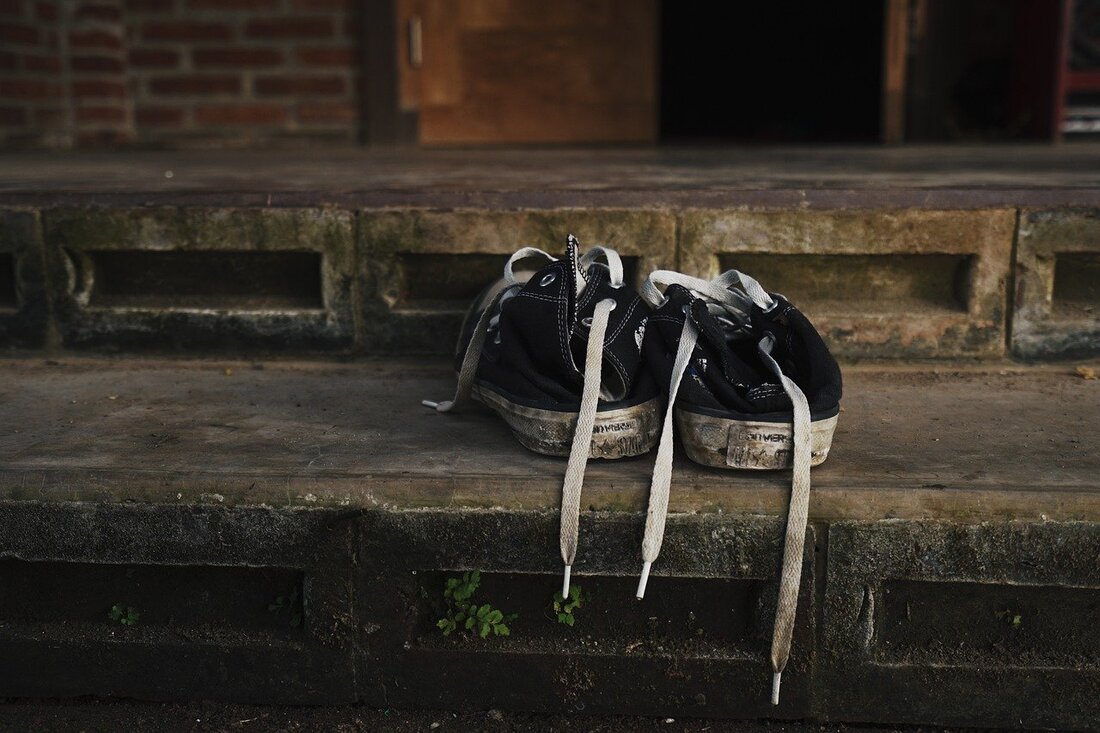
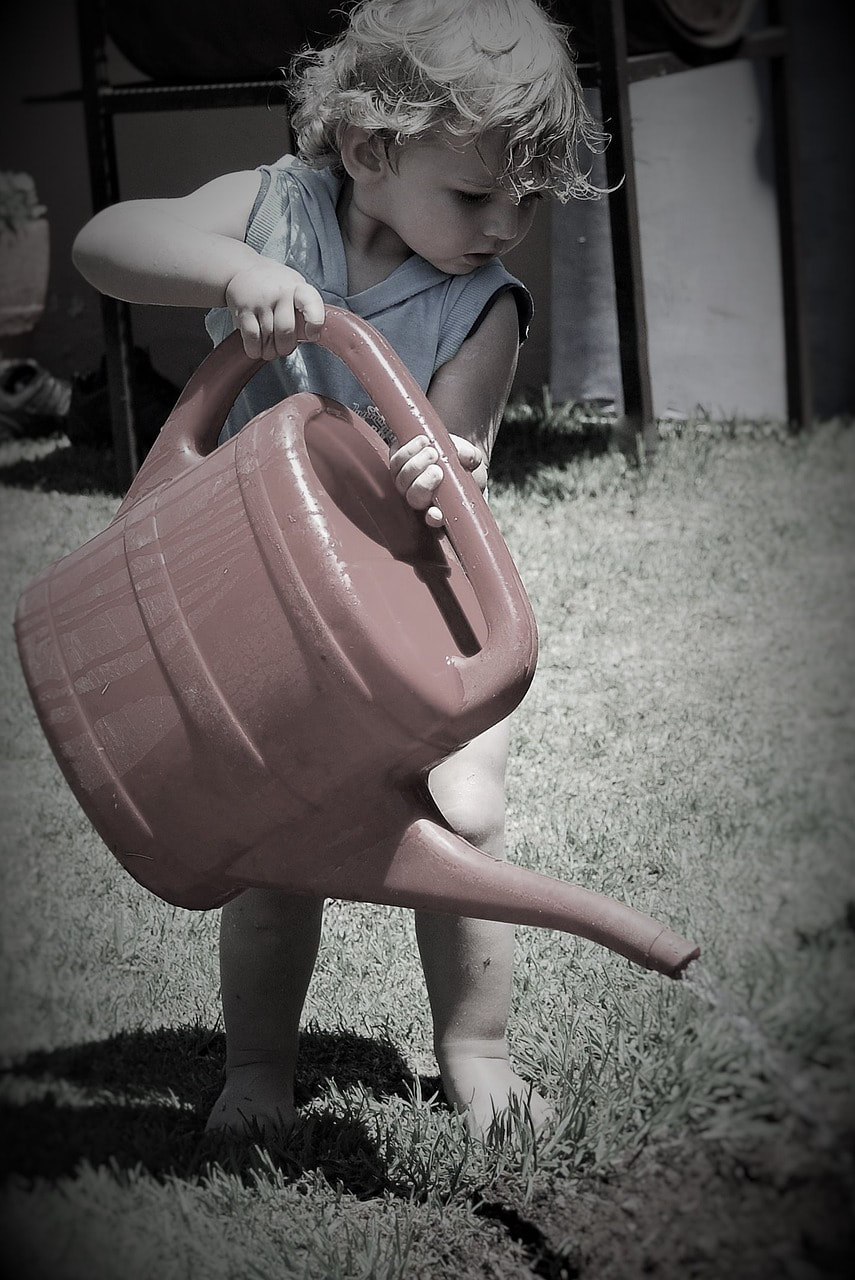
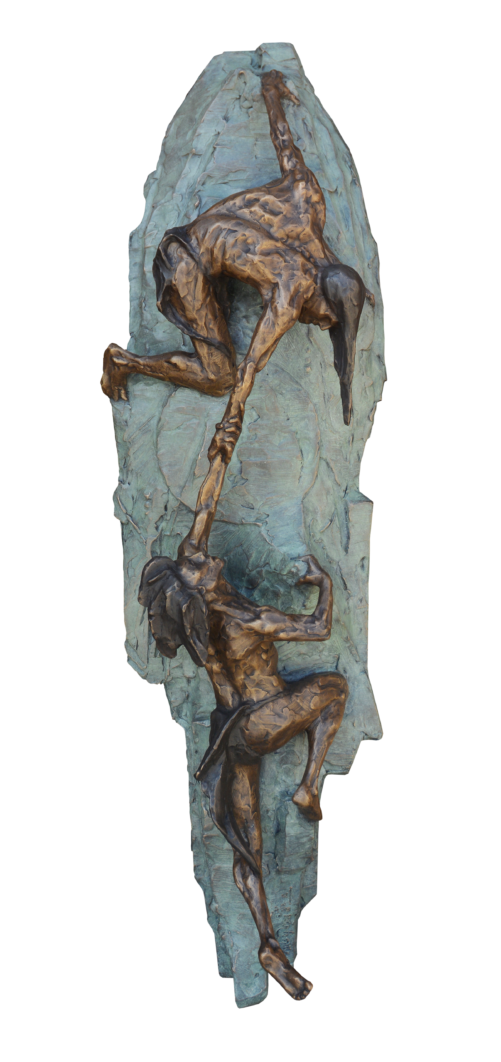
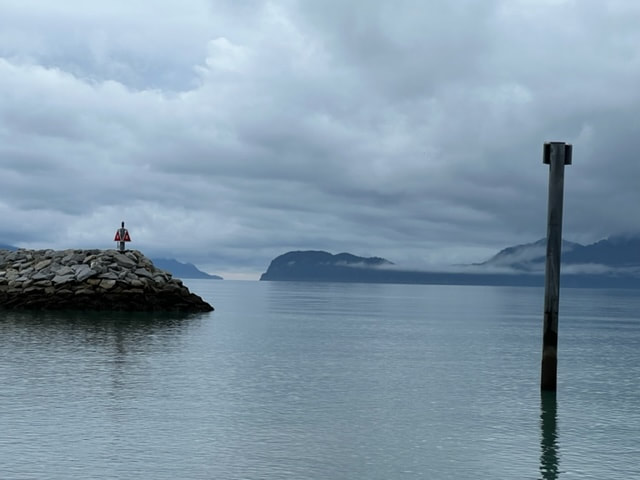
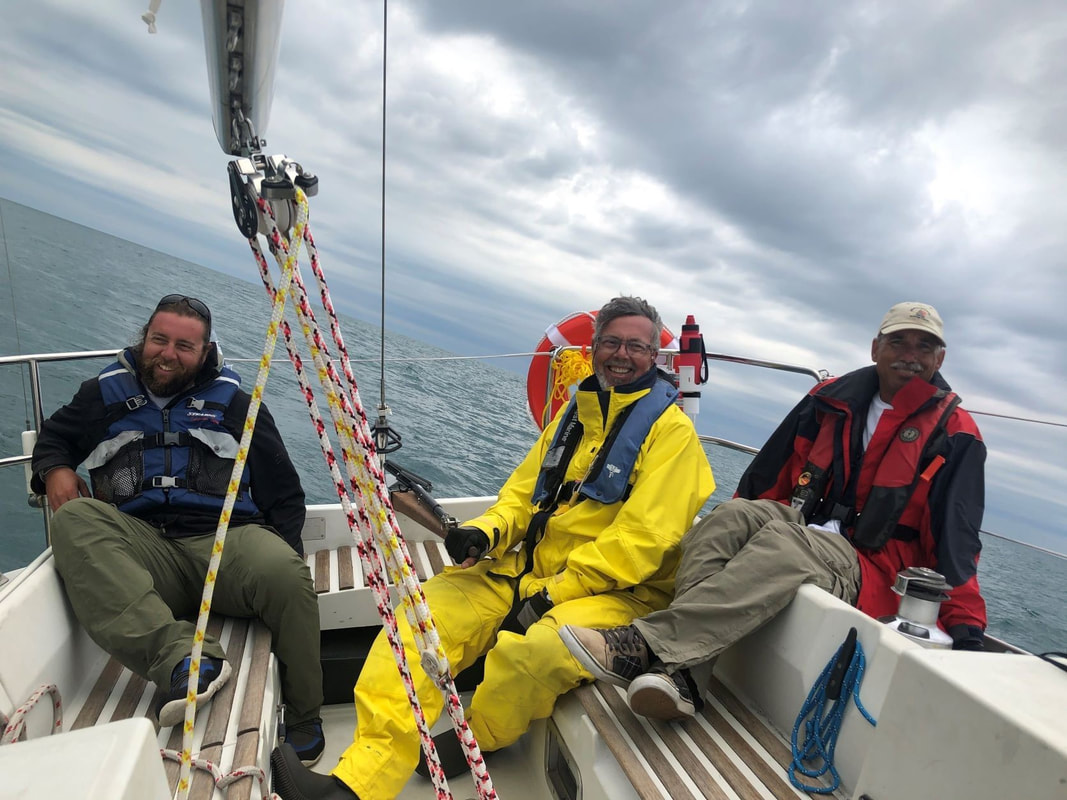


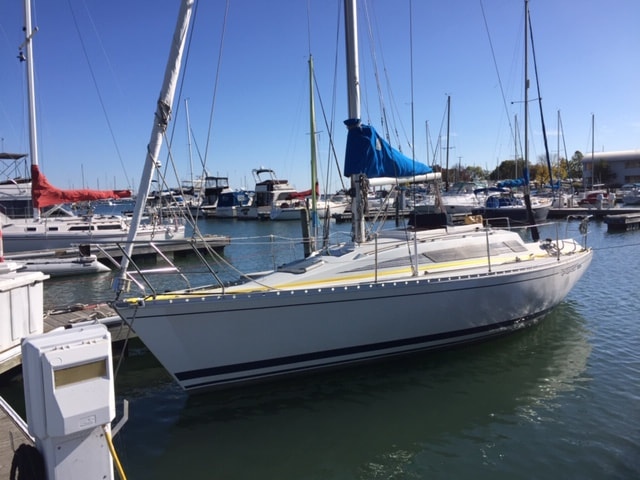
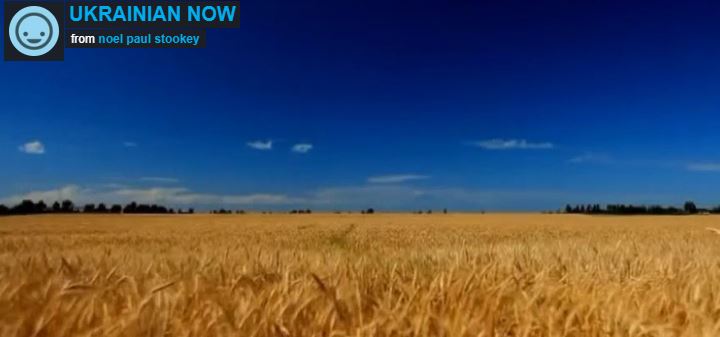

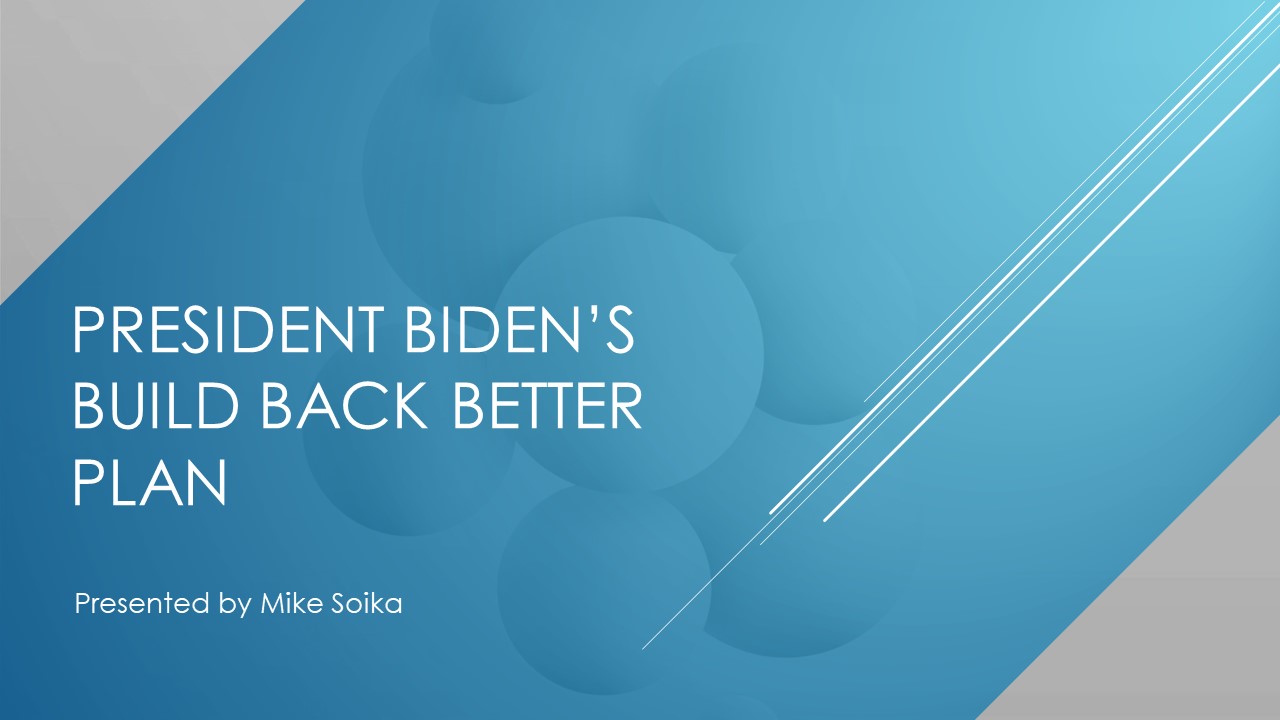
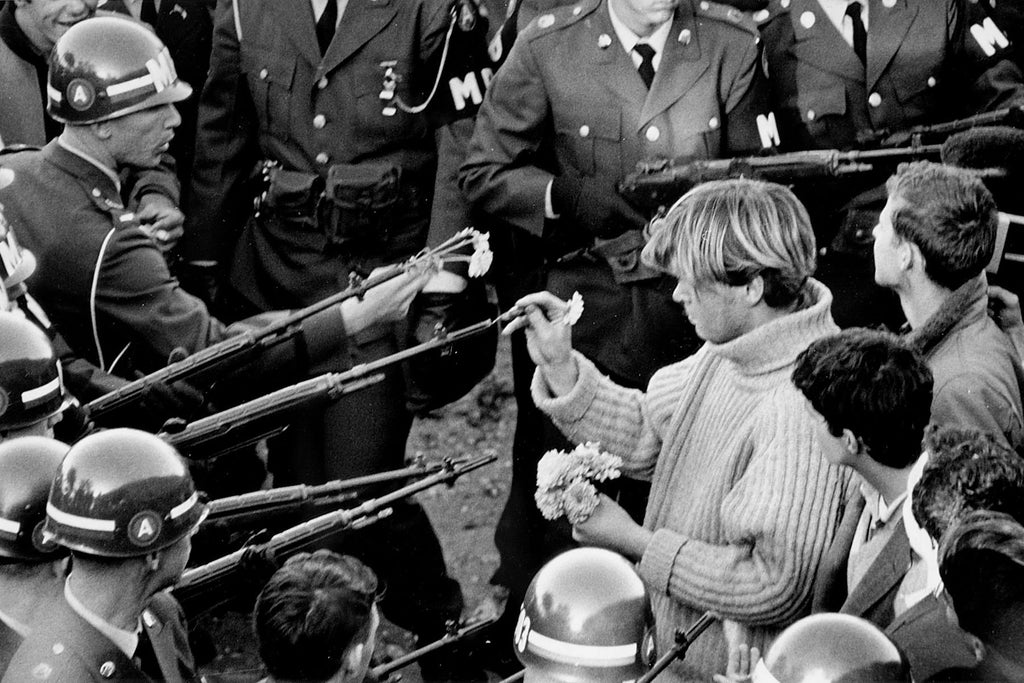
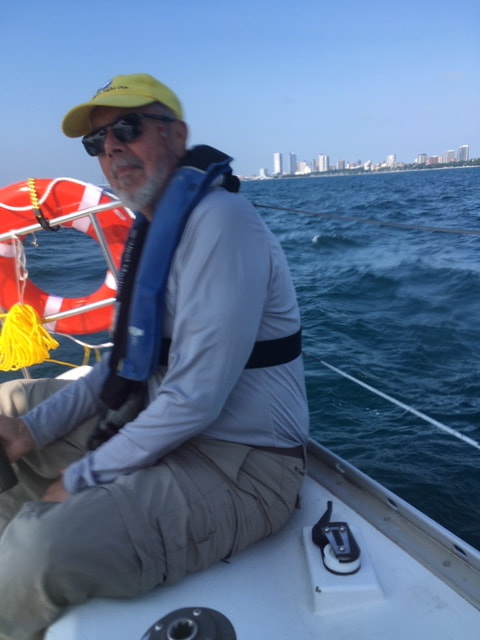
 RSS Feed
RSS Feed
